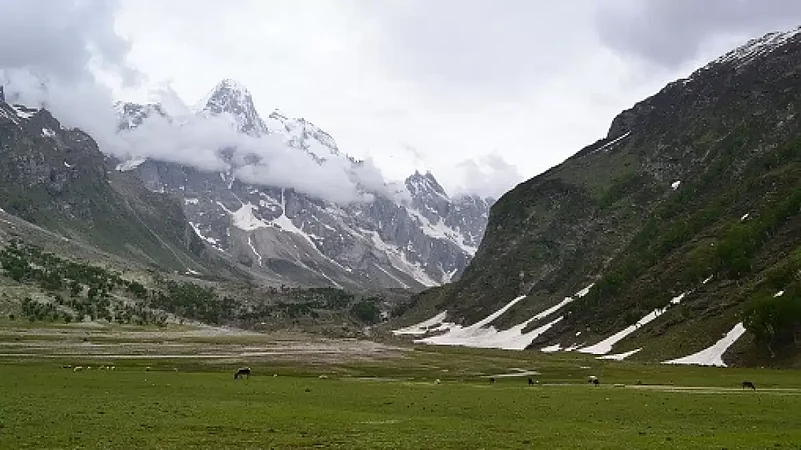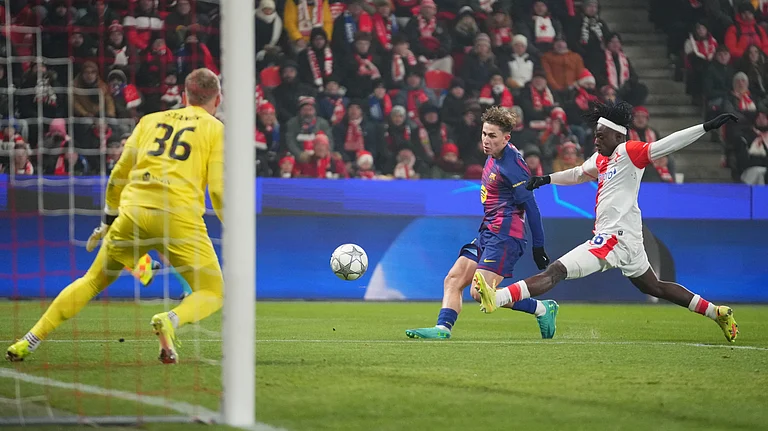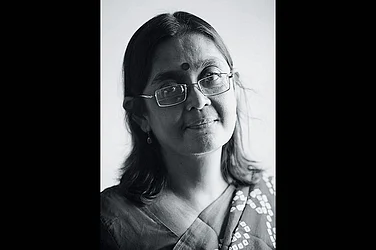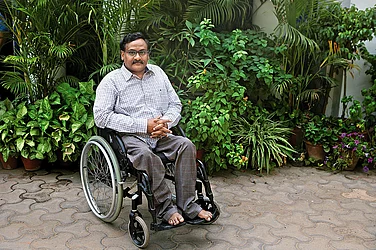The Union Territory of Jammu and Kashmir (J&K) is a singular political entity. It’s a matrix of diverse cultures, languages, and natural landscapes. Kashmir is just a sub-matrix, not a whole and contextually. But Jammu ―the other sub-matrix― is equally important and because of it, J&K is a matrix.
Over the decades, Kashmir has got so entrenched in the Indian mental landscape that if there is anything connected to J&K, the instant response is: isn’t it in Kashmir?
Jammu ―even though it is enriched with a similar geographical landscape, which makes Kashmir the land of ethereal beauty― continues to remain an entity with existence, but no recognition.
Its mountains overlook and stare at the Valley. Winds caress their snow-capped peaks and funnel down into the valley. Laced with the fragrance of pine trees and the texture of Dogra culture ―subdued not vocal― winds blow with an elusive hope for an elusive Bollywood camera pitched in Kashmir with a desire of being framed too in its undiluted, virgin, and innocent natural beauty.
As pines don’t bloom with bright flowers and don’t attract bees, Jammu doesn’t bloom in our imagination and doesn’t attract cameras. It’s not that Jammu doesn’t have a cultural or literary landscape. Ranbir, the first newspaper of J&K, started publishing from Jammu in 1924. Kashmir Times, the first English daily of J&K, was started by Jammu-based Journalist Baldev Parsad Sharma along with Gawsha Lal Koul in 1934 from Srinagar. Later, Kashmir Times was revived by Ved Bhasin from Jammu in 1954.
The literary landscape here germinated and bloomed. The ground was fertile for germination of cinematic ideas and they bloomed across the Jawahar tunnel.
In 1964, Shakti Samanta directed ‘Kashmir Ki Kali’, which made Kashmir explode on the cinematic landscape. Sharmila Tagore in traditional Kashmiri dress and Shammi Kapoor wooing her for Shikara with hit song, ‘Yeh Chand Sa Roshan Chehra’. It captivated Indians, lighting up their imagination as if Kashmir is the only ‘Janat Ka Chehra on Zameen’.
Jammu province ―still nursing the ‘loss of power’ after the Dogra rule ended in 1947 and the flames of the 1950s agitation by the Praja Parishad with slogans like “Ek desh mein do Vidhan, do Pradhan aur do Nishan nahi chalega” still not doused― came up with its first Dogri film ‘Gallan Hoyeian Beetiyaan’ that released in 1966.
While ‘Kashmir Ki Kali’ had nothing to do with Kashmir, except locales, the Dogri film had all the local elements, except the lead female actress. Actors, lyricists, script and dialogue writers were prominent literary figures of Jammu. It created a stir, but only locally. It hoped to bring Jammu on a much bigger silver screen, but patrons and masters of these screens were transfixed with Kashmir only.
The geographical landscape of this province ranges from the plains of Samba and Jammu districts to snow-capped peaks, streams, rivulets and pine trees in Udhampur, Kathua, Doda, Kishtwar, and Poonch districts. Some places in Kishtwar ―from where Dogra warrior Zorawar Singh led an army to conquer Ladakh and Tibet― are still out of bounds for the most part of the year, wrapped in snow and pristine natural beauty. The frozen stillness allures the camera to capture and frame stories but it remains elusive.
The locales are strikingly similar to Kashmir, except for the Dal Lake and Jhelum River, but they were neither pushed nor promoted. Then, successive Kashmir-centric J&K governments, probably nursing a grudge against Dogras, neither intended to.
Kashmir with its distinct or different culture, and language from the Hindi heartland of India offered novelty. Jammu was reduced to just one of the hundreds of provinces of India. It could also be poetic justice to a province that once ruled Kashmir and Ladakh. The camera doesn’t let you view the frame with both eyes. Cinematographers and directors tend to view locales or frames with just one eye. Ironically, it is how they viewed J&K by shutting down other eye, from which could view Jammu.
Thirteen years after the Dogri film was made, Bollywood stepped into the Jammu region. Two films ‘Janidushman’ and ‘Noorie’ were shot entirely in the Jammu region. ‘Jaani Dushman’ (released in 1979) with the hit song “‘ere haathon mein pehna ke chudiyan’, was shot mostly in Chenani and the picturesque Patnitop area of Udhampur district. The coming down of the film crew evoked such a response that Ram Soni, a Jammu-based wholesale vegetable seller, provided eatables, and along with other local artists, performed in the film.
The same year another film, ‘Noorie’, starring Farooq Sheikh and Poonam Dhillon, was released. It too was shot in Bhaderwah town, also called “Chotaa Kashmir, of Doda district in Jammu region.” Bhaderwah has a strikingly similar landscape that Kashmir offers: snowfall, snow-capped peaks, water melting from glaciers flowing in the streams passing through the middle of the town, wooden houses and vast expanse of paddy fields and orchids.
Yet, after these movies, Bollywood cameras didn’t revisit Jammu. Why? One doesn’t have to make a hard guess. In 1982, Amitabh Bachchan-starrer ‘Bemisal’, partly shot in Kashmir, was also released. One of its songs, ‘Is zameen se, aasman se, phoolon ke is gulsitan se, Jaana mushkil hai yahaan se. Tauba yeh hawa hai ya zanjeer hai, kitni khoobsurat yeh tasveer hai, yeh Kashmir hai’, just reinforced the same narrative that Kashmir in itself is J&K.
Like in the lyrics, Bollywood also proved that it is tied to Kashmir and probably ‘killed’ Jammu as a cinematic destination.
Cinema is the art of exploring and exploiting nature for cinematic themes. It’s said that there are about 10 or 15 major plots about which the entire literature is woven. The art is to weave the plot, and like it, the cinematic art is to weave locales, local culture with the major plot. Bollywood is failing either to extend or to explore the plots and locales. ‘Kashmir ki Kali’ would still have been the same hit had it been shot in Bhaderwah or Bani. Sharmila Tagore would still have carried the same innocent beauty and Shammi Kapoor wouldn’t have lost his wooing charm.
Bollywood too needs to be wooed to visit and explore Jammu. It has to be enticed and seduced. The natural beauty of Jammu is seductress to trap cameras once they get an even fleeting glance of it. It’s not a honeytrap for exploitation for nefarious design, but to get cameras in its tentacles to explode and explore itself.
The seductiveness of seductress withers in a lonely long walk. The natural seduction of Jammu can’t wither away, but it is waiting for too long for the gaze of the camera.
The cameras, though, yet again are gazing at Kashmir and were transfixed in the beaming G-20 meeting in Srinagar, which eventually was a banner headline. Major movie banners usually tend to act on reading headlines.
The two Bollywood movies shot in Jammu were probably like pine oil which disappears once dropped on the cloth without leaving a trace of scent. It lacks what Kashmir has got, what perfume manufacturers call fixatives which essentially hold the oil, releasing it gradually. The fixative is made or manufactured, not the oil.
(Views expressed are personal)





















